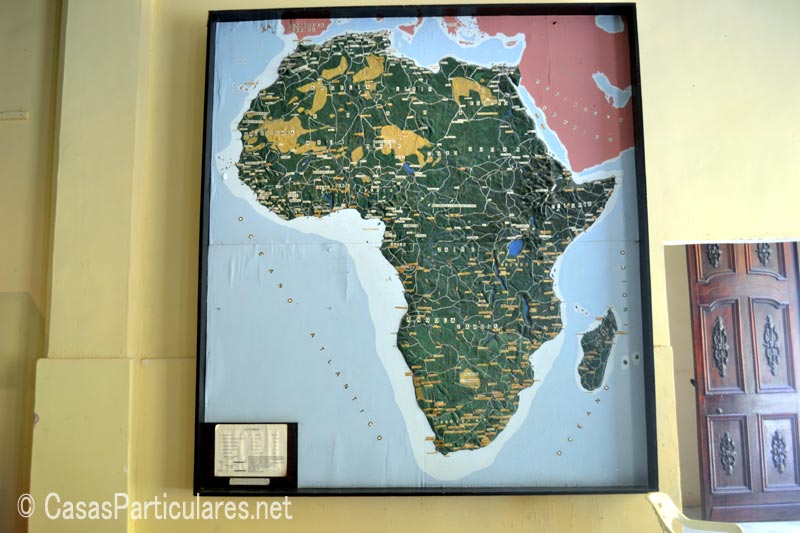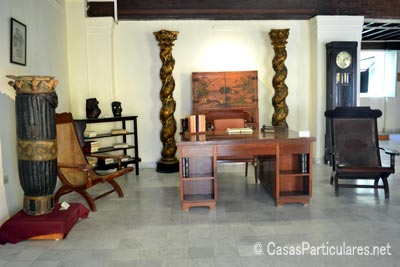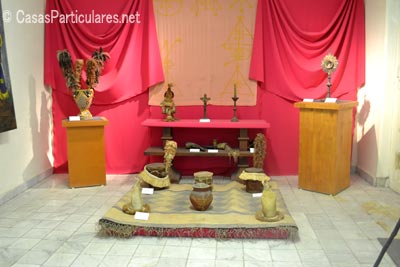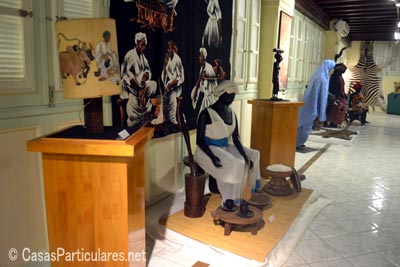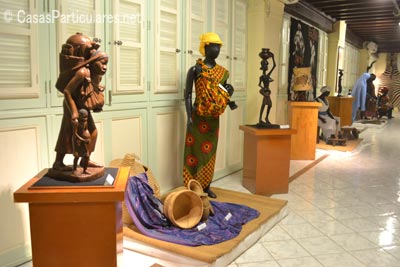The Museum House of Africa, Old Havana
Par Anonymous, translated from Spanish by Danil Ren.
A Museum to Know and Understand a Continent
Even if for everyone the discover of Cuba was Chrostopher Colombus, who arrived at the island on Octuber 27, 1492, after a travel where he appreciated the rest of the continent, in reality Cuba had three discovers.
The second one was the German philosopher and naturalist Alexander von Humboldt, one of the founders of modern geography, especially known in Cuba because his investigations about the country increased the knowledge of local geography, flora, fauna, topography, climate, the grounds, the sugar cultivation and elaboration, among other things.
And finally, the third discover was Don Fernando Ortiz, a famous anthropologist, jurist, archeologist and journalist who also studied the historic and cultural root of the African Cuba, as well as criminologist, economist, storiograph, musicologist, folklorogist, economist and geographist.
The House of Africa is precisely devoted to this eminence, a museum made to witness the elements of the history and influences of Africa in Cuba, where the historic inheritance of past African slaves is preserved.
The museum opened its doors on January 6, 1986 and, since then, it offered an extended ethnographic collection of the African continent, where more than 4000 pieces are exposed, from big figures in wood to little ivory relics, with genuine elements from 27 African nations.
The House of Africa museum introduces some permanent exhibition rooms about Sub-Saharan peoples and legitimate elements from several Afro-Cuban religions; in the museum many investigation works are also driven, because the house is also an important teaching institution, where many researchers, linguists and students constantly search historic elements about the links between Cuba and this region of the planet in many areas like the cuisine, the habits, the dance, the music, the language and the religion, among others.
Many of the exposed items came from the Fernando Ortiz's personal collection directly, aside from tributes and donations made to Fidel Castro, in occasion of his countless visits to the different African countries.
The African museum is probably the only place in the world where 100% of the exposed objects are the result of some donation from the continent itself over the curse of the last 50 years.
The Collections
There are ten collections that are shown to the public in this museum.
First of all, the collection of slavery, where the museum shows the objects and the memory of this infamous activity that occurred in Cuba. One of these pieces is the vertical carriage, it was used as a transportation of sugar-canes; as well as ancient cauldron, a brick from an old mill, a sample of some body punishment equipment, the whipes and the handcuffs that were used in a repressive way, as well as the pylons and other elements that reflected all the horror of this time.
The Fernando Ortiz exposition room, shows many books and personal objects belonged to the Cuban researcher, it also contains witness of religious Afro-Cuban practices, such as the Ochoa and Ifá Rule or Santería.
It's a religion born from harmony between the Yoruba traditional culture and the catholic religion; from its side, the Palo Monte is another of the African religious manifestations which has its place in the museum. This religion took place in the American continent and also the shamanism and spiritisme, the magic and the Catholicism and, furthermore, we can find the Abakuá's religion, a secret society of Cuban origin where only males are accepted.
Another collection is the one of popular religiosity, which answers to the diverse forms of Cuban religion with African origin, in conformity with the ethno-linguistic grouping.
The collection about cultural manifestations and the countries, in the second floor, is devoted to represent the different cultural manifestations about Africa, as well as the lifestyle of African countries. Here, we can know their art, their handcraft objects which represent the most characteristic and common in these peoples, as well as their economic activity, their habits and so on.
In the room exposing the items and ivory, we may observe the way the ivory was worked in Africa, and, it is shown, by mean of several elephant tusks, the handcrafting process of ivory manufacture, since its raw state into the most elaborated one.
On the other hand, the Masks exposition shows the forms and material of these objects from the most diverse points of views, because of the infinity of things they represent.
Its name is self explanatory, the textile collection is destined to show costumes which in Africa are manufactured with very specific characteristics, such as the typical African clothings, that are a form of continental identity.
Music is also present by the collection of musical instruments coming from several zones of Africa. The Arará drum is considered as the jewel of the institution, being a unique piece in the collection, created in Havana by a slave hundreds of years ago. It possesses the main particularity to have a head of African man sculpted in the upper part.
The room also show other original pieces of African musical culture, such as the agogos, the little bells to evoke saints during religious seances, the yuka or the «long post», with which it was played in Cuba the first African music, without counting the keys and the maracas; after all, the museum also possesses two of the 25 unique exemplars sculpted in wood of Batá drums (made in double leather, sculpted in wood in hourglass form, with a cone longer than the other), all this made in Cuba to be used in rituals.
And, lastly, we have to mention the collection of tools made using only vegetal fibers, as well as many specimens of basket made from several varieties of these fibers, a typical female tool used to move a large quantity of merchandises for long distances, as well as the collection, sorted by African country, which i located in the third floor and representing the new African states according to their new political administrations. This collection consists in a scale model where we can observe the geographic distribution of many countries.
The Africa House at Your Service
The museum offers cultural activities, free, guided or directed visits, we promote events, courses and many workshops imparted by important researchers about African matters. Among these events, the most important is The Scientific Workshop on Afro-American Social and Cultural Antrophology Between Cubans, which is made each year to commemorate the African Museum birthday.
Another thing that worth mentioning is the José Luciano Franco office (a Cuban professor, investigator and journalist specialized in the slavery historic topic, as well as their rebellion), which works once a month and where eminent researchers of the same matter introduce their works.
In the museum, there is also a specialized library. Courses are also given and special access points are created with the aim to offer the service even to disabled people.
Located in #157 Obrapía street between Mercaderes and San Ignacio, in the historic center of Old Havana and directed by Alberto Granado Duque, the House Museum of Africa is open from Tuesday to Saturday form 10:15 AM to 5:45 PM; in the evening the museum organizes direct visites and spectacles prepared by several agencies about tourism. The Sunday the center is open from 9:15 AM to 12:45 PM.
For more details you can call at (+537) 861-5798.







